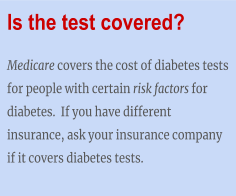Learn Your Way to A Healthier Life
How Do You Diagnose Type 2 Diabetes
September 11, 2020
According to CDC, 90-95% of the diabetes cases are Type 2 Diabetes. Even though Type 2 Diabetes can happen at any time of your life, it usually happens after the age of 45 years old. Type 2 Diabetes is also called adult-onset diabetes. Type 2 Diabetes is usually diagnosed through blood tests that measure the amount of blood sugar (glucose) in the body: The following table shows the normal ranges if you are not pregnant. All tests use different measuring techniques. So doctors usually need to repeat the same test or have two or more tests done to confirm a diagnosis. This means, if your number is high for two separate tests, you are likely diagnosed with diabetes. Some people may get their sugar tested because they have noticeable symptoms. Most people get diagnosed with routine tests. Routine screening usually starts at the age of 45. However, if you have risk factors below, you may want to follow the test more closely: If the test results are normal, repeat the test every 3 years. If you are at borderline, ask your doctor when to come back for another test. Even though a diagnosis of Type 2 Diabetes may sound scary, there are still things you can do to reduce medications and complications down the road. Many people with diabetes live a life free of complications with their diabetes well-controlled by eating a healthy diet and being active. With a better understanding of how diabetes is diagnosed, you may want to take action to prevent diabetes if you are at high risk, or you may set goals with controlling your blood sugar if you are diabetic.
Testing for Type 2 Diabetes
How to Interpret the Result
Diagnosis
A1C (percent)
Fasting Plasma Glucose (FPG)*
Oral Glucose Tolerance Test (OGTT)**
Random Plasma Glucose Test (RPG)*
Normal
Below 5.7
99 or below
139 or below
Prediabetes
5.7-6.4
100-125
140 to 199
Diabetes
6.5 or above
126 or above
200 or above
200 or above
**At 2 hours after drinking 75 grams of glucose. To diagnose gestational diabetes, health care professionals give more glucose to drink and use different numbers as cutoffs.
Source: Adapted from American Diabetes Association. Classification and diagnosis of diabetes. Diabetes Care. 2016;39(1):S14-S20, tables 2.1, 2.3.Who Should Get Tested?



